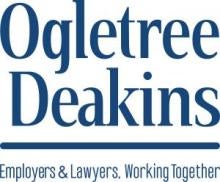On September 20, 2024, Nova Scotia’s Stronger Workplaces for Nova Scotia Act, which amended the Workers’ Compensation Act, the Occupational Health and Safety Act, and the Labour Standards Code, received Royal Assent. Portions of the Stronger Workplaces for Nova Scotia Act are already in effect. This article will review the changes coming into effect in July and September 2025.
Quick Hits
- The Stronger Workplaces for Nova Scotia Act amends the Workers’ Compensation Act to include Section 89A, which outlines the duties of employers and employees regarding the early and safe return to work of injured workers. This change will come into effect on July 15, 2025.
- Starting September 1, 2025, the act will also amend the Occupational Health and Safety Act to include psychological health and safety in the definition of “health and safety” and require employers to establish policies to prevent workplace harassment.
- Employers may want to review and update their current policies on harassment, occupational health and safety, and safe return to work to comply with the new regulations and address the Nova Scotian government’s focus on preventing workplace harassment and psychological harm.
Changes Coming in July 2025
The Stronger Workplaces for Nova Scotia Act amends the Workers’ Compensation Act by adding Section 89A and changing Subsection 89(3), which provides the definitions for “alternative employment” and “suitable work,” to apply to Section 89A as well. These changes come into effect on July 15, 2025.
Section 89A essentially codifies an employer’s and employee’s duties and the actions when an employee is injured and returns to work. It states,
(1) The employer of an injured worker shall co-operate in the early and safe return to work of the worker by
(a) contacting the worker as soon as practicable after the injury occurs and maintaining communication throughout the period of the worker’s recovery and impairment;
(b) attempting to provide suitable work that is available and, where possible, restores the worker’s pre-injury earnings;
(c) giving the [Workers’ Compensation] Board such information as the Board may request concerning the worker’s return to work; and
(d) doing such other things as may be prescribed by the regulations.
(2) An injured worker shall co-operate in the worker’s early and safe return to work by
(a) contacting the employer as soon as practicable after the injury occurs and maintaining communication throughout the period of the worker’s recovery and impairment;
(b) assisting the employer, as may be required or requested, to identify suitable work that is available and, where possible, restores the worker’s pre-injury earnings;
(c) giving the Board such information as the Board may request concerning the worker’s return to work; and
(d) doing such other things as may be prescribed by the regulations.
(3) Where, in the opinion of the Board, an employer fails or refuses to comply with subsection (1), the Board may impose a penalty on the employer not exceeding the total of
(a) the full amount or capitalized value, as determined by the Board, of any compensation payable to a worker of the employer in respect of injuries that occurred to the employer’s workers during the period of non-compliance; and
(b) any other expenditures made by the Board in respect of injuries that occurred to the employer’s workers during the period of non-compliance.
(4) Where, in the opinion of the Board, a worker fails or refuses to comply with subsection (2), the Board may suspend, reduce, terminate or withhold the worker’s compensation during the period of non-compliance.
The definitions of “alternative employment” and “suitable work” in Subsection 89(3) are the following:
- “Alternative employment” means employment that is comparable to the worker’s pre-injury work in nature, earnings, qualifications, opportunities and other aspects.
- “Suitable work” means work which the worker has the necessary skills to perform, is medically able to perform and which does not pose a health or safety hazard to the worker or any coworkers.
However, only “suitable work” is used in Section 89A and not “alternative employment.” So, based on Subclause 89A(1)(b) the employer only needs to attempt to provide work which the worker has the necessary skills to perform, is medically able to perform, and does not pose a health or safety hazard to the worker or others, but does not need to be comparable to the worker’s pre-injury work.
Both employers and employees must follow Section 89A, or else the Workers’ Compensation Board of Nova Scotia can issue penalties against them. If an employer runs into issues where an employee is not communicating while recovering from their injuries or is not assisting in finding suitable work, it could remind the employee of his or her obligations under Subsection 89A(2) and that the Board could suspend, reduce, terminate, or withhold the employee’s compensation.
Changes Coming in September 2025
The act’s amendments to the OHSA focus on physical and psychological health and safety, and preventing harassment in the workplace. These changes come into effect on September 1, 2025.
The first change is that the act adds the definition of “health and safety” to Section 3 of the OHSA, which includes both physical and psychological health and safety. This could have significant impacts throughout the OHSA, as every mention of “health and safety” now includes psychological health and safety. For example, Section 13(1)(a) and Section 17(1)(a) state that employers and employees respectively shall take every precaution that is reasonable in the circumstances to ensure the health and safety of persons or themselves at or near the workplace, which now includes psychological health and safety.
The second change by the act adds Subsection (4) to Section 13 to the OHSA. Section 13 prescribes the employer’s precautions and duties, and Subsection (4) will add the following:
(4) Every employer shall, in accordance with the regulations, establish and implement a policy respecting the prevention of harassment in the workplace.
While it is not yet clear what employers need to include in this policy, we anticipate the Nova Scotia Occupational Health and Safety Division releasing the regulations and a companion guide by mid-summer 2025, to be in force by September 1, 2025.
We further anticipate the definition of harassment in the regulation to be similar to the language in the Workers’ Compensation General Regulations, which states,
“workplace harassment or bullying” means a single significant occurrence or a course of repeated occurrences of objectionable or unwelcome conduct, comment or action in the workplace that, whether intended or not, degrades, intimidates or threatens, and includes all of the following, but does not include any action taken by an employer or supervisor relating to the management and direction of a worker or the workplace:
(i) workplace harassment or bullying that is based on any personal characteristic, including, but not limited to, a characteristic referred to in clauses 5(1)(h) to (v) of the Human Rights Act,
(ii) inappropriate sexual conduct, including, but not limited to, sexual solicitation or advances, sexually suggestive remarks or gestures, circulating or sharing inappropriate images or unwanted physical contact.
Employers with comprehensive harassment policies may not need to make any changes until the regulations are out; however, if they do not have such policies yet, they may want to begin drafting them.
Impact of These Changes
Employers may want to consider what impact the Stronger Workplaces for Nova Scotia Act will have on their workplaces and review their current harassment, occupational health and safety, and safe return to work policies, especially because the Nova Scotian government is taking harassment and psychological harm in the workplace seriously.




 />i
/>i

